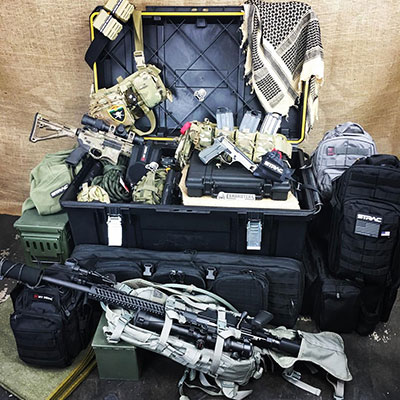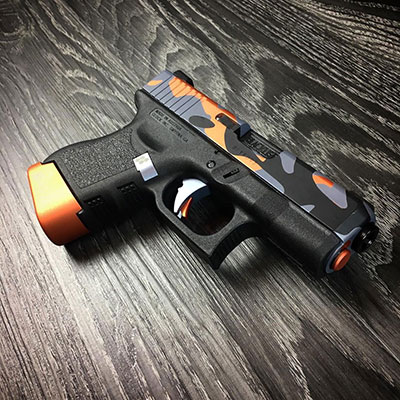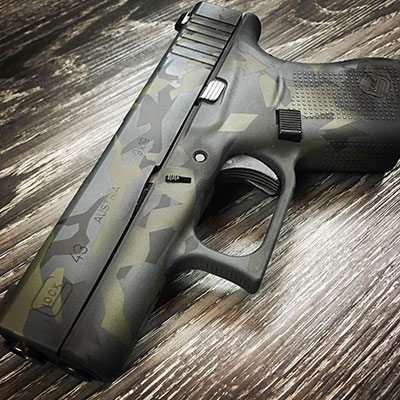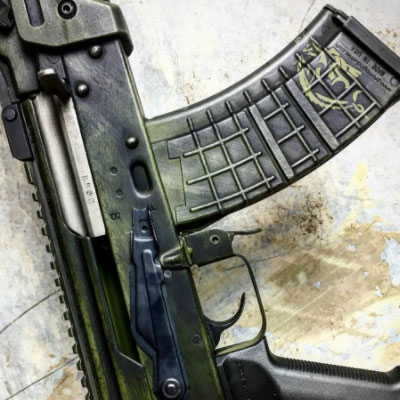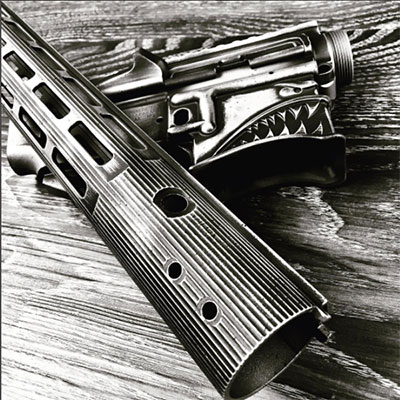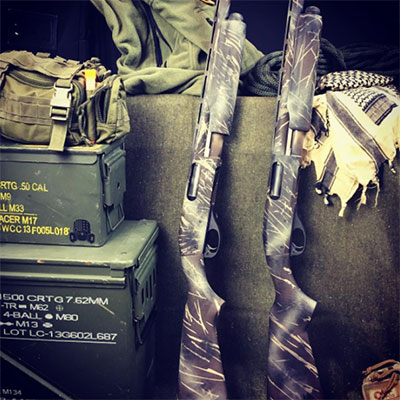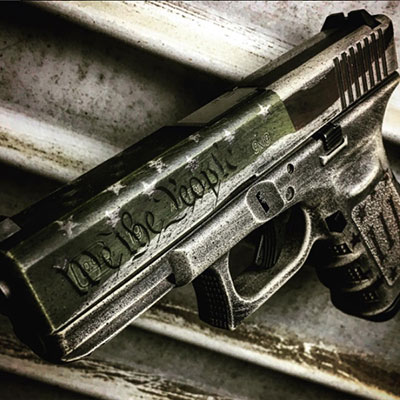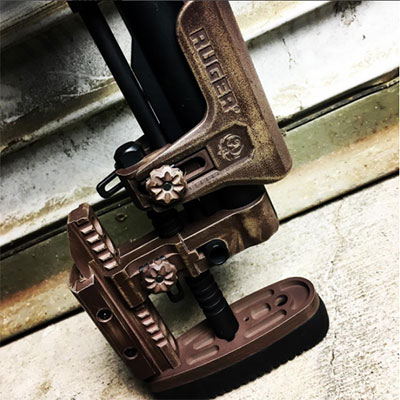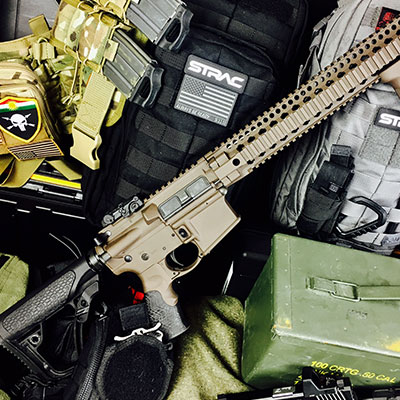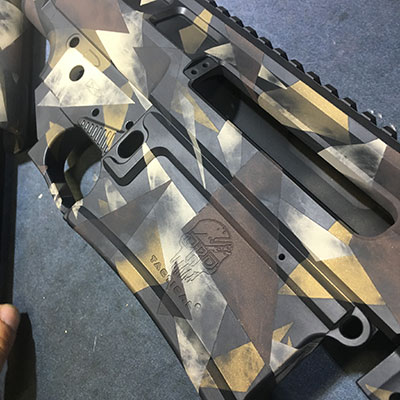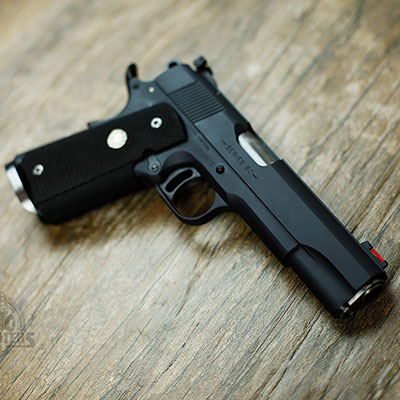- Home
- What is Cerakote? Specs, Tolerances, and Protecting Your Firearm.
show / hide sidebar
Recent Posts
What is Cerakote? Specs, Tolerances, and Protecting Your Firearm.
What is Cerakote?
What is Cerakote? While a proper bluing is nice, it simply doesn’t compare to the benefits that come with Cerakote. Cerakote is a unique formulation, a sort of mixture of polymer and ceramic qualities, that will out-perform most any other surface treatment on your firearm, or anything else you need coated.
The benefits are numerous, from increasing wear resistance, to reducing corrosion, and even chemical resistance. It will also reduce friction between parts by up to 80%, as quoted by numerous testing sources. The Cerakote coating itself is both strong and hard. It will hold up to impacts, yet at the same time protect your gun against scratches and scrapes.
For most applications, the coating is also incredibly thin, on the order of 1 mil, or one thousandth of an inch. For most components, that means it can be applied while maintaining a solid fit and finish on the firearm’s working parts. When special care is taken, even internal working parts can be coated to give them a longer lifespan. Different components benefit from different series of Cerakote, so it’s important to have an expert who knows the best series for each part apply the finishes.
Quite simply, Cerakote out-performs all other means of protecting your firearm, and if you truly want a finish that will last long enough to pass your guns down to your grandkids, you need to look seriously at the Cerakote process.
Cerakote isn’t only for firearms. It can actually be applied to a number of different materials. It will work on metals of any kind, plastics and polymers, and even wood products. Some products, due to their makeup, will require different series and curing procedures, but in general, Cerakote can be applied to most items. It isn’t limited to barrels and slides.
Cerakote Specs and Tolerances
Fit and Finish:
Most Cerakote applications, especially on firearms, involve a coating and curing process that leaves you with a 1 mil final thickness on top of the part, though this can be as low as a quarter of a mil, depending on the Cerakote Series. While this coating is thin, it will affect the fit and finish of the firearm. This can reduce sloppy mating of the slide to the receiver on a handgun for more accuracy. Guns spec-ed for tighter tolerances may require some lapping to ensure that you end up with a precision fit. The same goes for internal components that are under tight tolerances. Sometimes, where thickness of the film is an issue, different series of Cerakote will be choses based on its properties, ensuring that when your gun is reassembles, the right fit is maintained to keep everything in working order.
Markings:
In general, heavily stamped markings aren’t going to encounter a problem during the coating process, however, any markings that are shallow – especially laser engravings – will need to be masked in order to ensure they are preserved. While there are some markings that customers would gladly be rid of, like annoying branding or logos, serial numbers that are not cut deep into their respective parts will need to be masked, to comply with BATFE regulations. Manufacturer markings that you wish to keep can be masked, and left uncoated, so they will remain visible on the weapon.
Different Series of Cerakote:
When most people discuss Cerakote, they are referring to the H-Series, which must be baked, and has a fairly high heat tolerance of 500 to 600 degrees Fahrenheit. It also comes in the widest range of colors, and gives the best performance metrics for wear and scratch resistance, as well as rust resistance. These stats are great, but there are other series that might work better for specific applications.
For example, there is a high-temp version of Cerakote which can be air cured, while providing up to 1700 degrees of temperature resistance. Perfect for that suppressor or barrel, but the wear resistance isn’t as good as the H-Series. Another option is a super thin dry film that penetrates the metal, allowing it to be half or a quarter as thick as the standard thin film. Other series exist, and your coating expert will know which to apply to what parts.
Performance Metrics
As I said, different coating series will perform slightly better or worse than others in each of the following areas, but here is a list of typical specs, to give you an idea of general performance factors you can expect.
Rust Resistance:
Cerekote finishes are tested with a salt solution. This is akin to one of those glock torture tests you see on you-tube, but with a very specific and scientific metric applied. There are generally two ways to perform this test. Either the part is hung and put under a constant spray a saltwater, which most coatings will tolerate on the order of thousands of hours, or they are dropped into a vat of the salt solution and left to soak. Let’s face it, you don’t want to drop your custom 1911 in a salt bath, so these scientists have done the testing for you. In this kind of full immersion test, the coating will hold up against rust for hundreds of hours. Try that with a blued slide, the difference in the results is obvious.
Wear Resistance:
Wear cycles are generally applied with a buffing wheel coated with abrasive material. Due to the lower coefficient of friction and the ceramic-polymer makeup of the coating, it’s been determined that Cerakote finishes can hold up well to over 5,000 wear cycles for every mil of thickness. Some series are even stronger. Think about how many rounds it takes on a stock slide before you start to see shiny metal under the stock finish. Nuff said? Moving on.
Adhesion:
This is one area that can be incredibly simple or complex, depending on how much digging you want to do into the various testing methodologies. You can, for instance, look up what an ASTM D3359 rating of 5B means, which Cerakote earns admirably, or you can see that a 180 degree bend over a quarter-inch mandrel didn’t involve the coating coming loose or flaking off. Ball bearing impact tests are also done to apply 160 inch-pounds of impact force without cracking, or any sign that the coating is coming loose.
Hardness:
Another scientific test, the ASTM D3363, rates Cerakote coatings with a pencil hardness of 9H. It also rates them with a scratch resistance of 6H. While you still wouldn’t want to run a nail across it under force, these are actually some of the best results you will see with this test, on any coating.
Cerakote is some amazing stuff, and depending on your application, it can be used to treat most surfaces, from sunglasses to suppressors, giving longer life to your prized possessions.
 Loading... Please wait...
Loading... Please wait...

